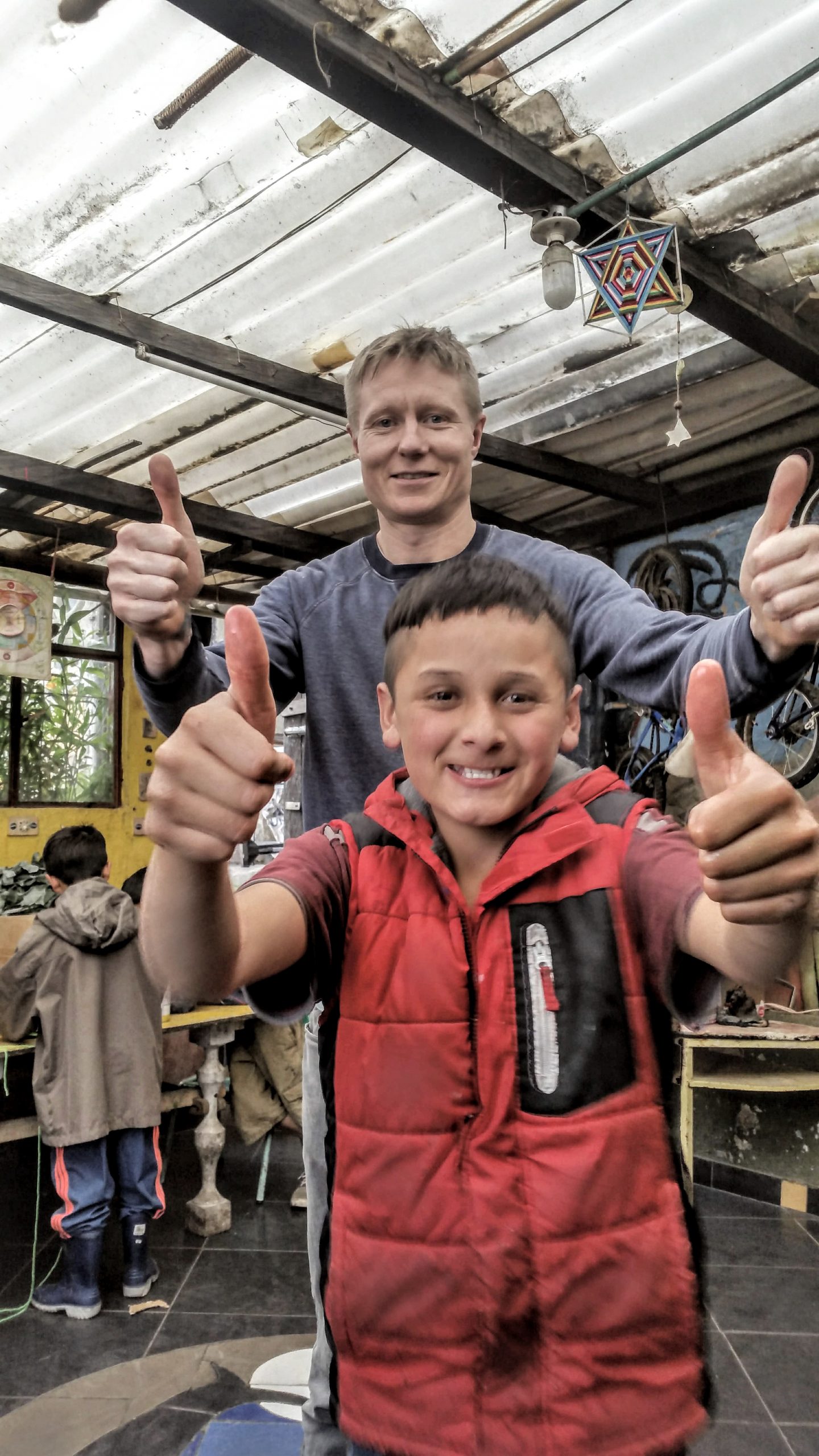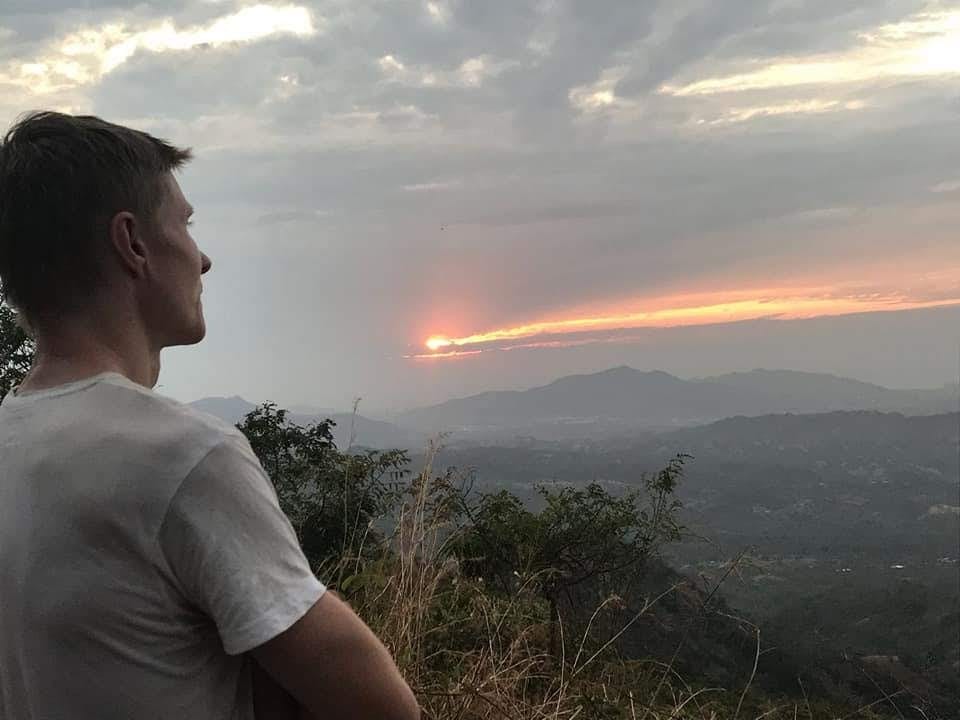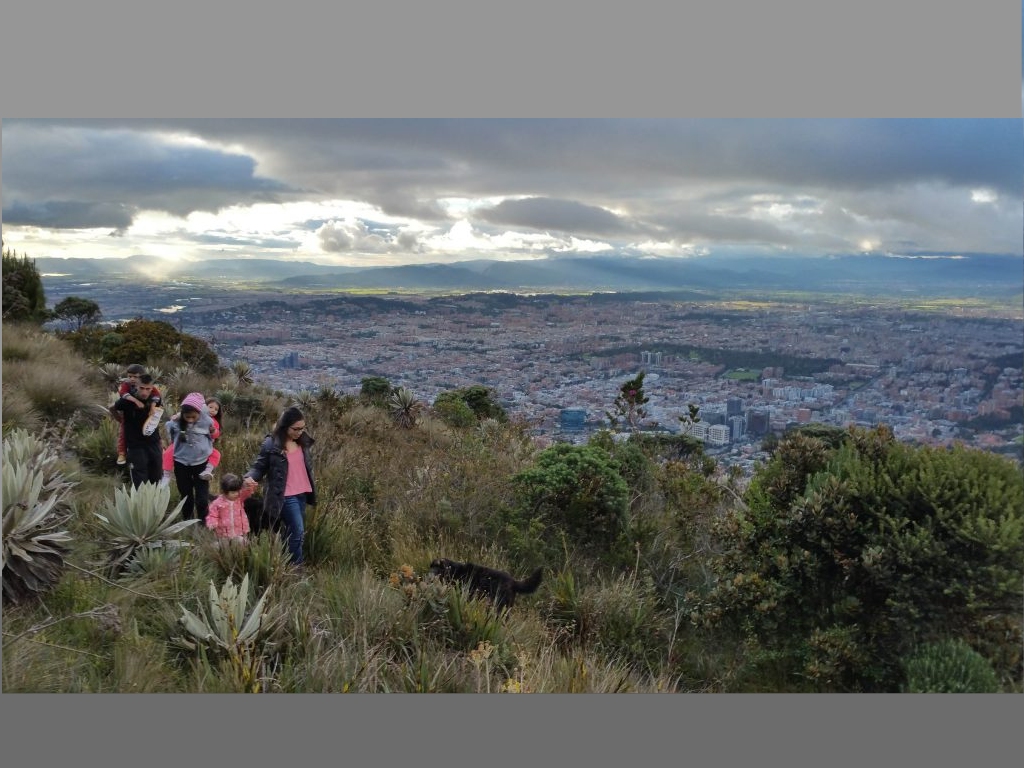About The Sam Ling Gibson Trust
Sam Ling Gibson (1984-2019) was born and brought up in Gateshead. He lived in Bogota, Colombia from 2009 – 2019. During his time there he was a committed, highly engaged volunteer with Casa Taller Las Moyas, a community organisation based in San Luis, a disadvantaged peripheral neighbourhood on the outskirts of Bogota.
Sam tragically died in July 2019. In his memory, his family and friends in the UK wish to establish this Trust to raise funds in order to continue his commitment to Casa Taller.
Sam worked directly with the community, helping to organise activities including travelling school, cooking, gardening, carpentry. He was also active in building the centre, and was a mentor and beloved friend to the many children and young people at the project. He also fundraised for the project.
Geraldine, his mother, and Joe, his brother, had a heart-warming visit to Casa Taller in November 2019, meeting with the community volunteers and the children participating in the project. They identified four important areas of activity that would be important for them to develop in the future which Sam was closely connected with.
Sam Ling Gibson Trust has started the process of establishing itself as a charity. The founding committee is Geraldine Ling, Chair; Katherine Zeserson, Treasurer; Kath Schofield, Joyce Kane, Justine O’Driscoll and Dr. Tina Cook.

What Sam Said About Casa Taller
My name is Sam Ling Gibson and I’m writing this heartfelt letter to all of you!! For those who don’t know I live in Bogotá, Colombia. Any spare time there I volunteer to work at an inspirational project.
As in any conflict, those who suffer are those on the peripherals of society and social disadvantage pushes them further into poverty. For many shanty towns, which proliferate around the edges of the city. San Luis is typical for such reasons, but distinct due to the existence of an inspirational charity. Casa Taller (workshop house) provides opportunities to children and young adults with none. The project offers the local children the very things that a country at war has taken away from them: a means of learning new skills, a real alternative to gangs and violence, and above all the values of socialisation, team building and identity, which they all take back into their community. Recent projects have been workshops on recycling, restoration of surrounding parks, water awareness campaigns and horticultural and self-sustainability initiatives, as well as the English, street art (graffiti), and carpentry classes that I bring to the foundation.
Colombia has neither this wealth nor culture of charity. Casa Taller is consequently in terrible financial situations- water and electricity (and if they even had gas) are cut-off regularly due to non-payment.
Thanks for reading, Sam!
AN INTERVIEW WITH SAM
My name is Sam Ling Gibson, I’m from England. I’ve been in Colombia for between seven or eight years, which means I’ve been at Casa Taller for seven or eight years. I came here because my and my family have always had a social conscience and been involved in social work, I am teacher but it has always been an important part of my life, to have a social conscience and be involved in social action, I think it’s a responsibility of everyone to do that, there’s no excuse not to
So when I arrived to Bogota I was working and am still working with ex combatants who came from the FARC guerrilla, women, youth, and I started to work with them and do research with these populations, and then I started to teach, I am an educator, I am also working on a project with the Ministry of Education to improve the educational programme for the ex-combatants from the armed conflict.
Many of these processes work with children, with cases which are varied and challenging . The cases here are really important, it’s an area forgotten by the state, here we are next to Bogota and you can see the city but I don’t consider this to be part of Bogota, because physically you feel outside of the city, there are animals, countryside, e are very luck because we are next to the paramo, which is where the name comes from- the Las Moyas paramo. So what did the government do here do here? They built a road, brought electricity for some houses, and that is basically it. So what we do here in Casa Taller is so important, and that’s why I am here, we are offering a safe space, that’s the most important thing. I’ve volunteered with a few different organisations Bogota which work with kids, but the others were institutions, were linked to the state, they were very cold in their approach to the work, and I didn’t feel like they were good spaces to get involved with. Until I arrived here. An English friend of mine who lives in Cali knows Nicolasa, so he told me to come to Casa Taller, he said ‘go, you will find something very beautiful’. So I came, and I knew from the first day that this is where I was going to stay, I was completely happy to give me time here.
So what do we do? We have all different types of workshops and learning, we are sitting here now in the music room where the kids learn different instruments; we also are taking advantage of this moment because we’ve got home made pizzas in the oven for 30 people, that was today’s activity, all day we were making the dough with the kids. Here we do all of the different forms of art, I teach carpentry here, we have ceramics, we’ve got the vegetable garden where we grow things and then use them to cook with, we make our own bread here…and a thousand more things that the kids learn. Everyday there is something. There is an energy, a great energy here. And now we are in a phase where, because Casa Taller has existed for about 15 years now, and the older kids who are now 18 and above, we are at a moment where they are more involved in running Casa Taller, before it was only Nicolasa, and that was important for starting and building Casa Taller, but now it is important to empower and give responsibility to the generation that have now grown up and are now adults, and they want that and are already doing it, and its been so great to see that transition in the years since I have been here.
Aside from all of these workshops that we do, the most important education that Casa Taller gives is the social education the kids get, because this is a very poor neighbourhood, so lots of the kids come from households with lots of problems , there are parents who are alcoholics and drug addicts, many single parents, a lot of families who often don’t have enough money or food to eat in the house, it is very common that their parents beat them, so they come here initially with issues that affect them and are often resentful, and its very beautiful to work with them and see the difference it makes, to see the changes…it might take two days, to weeks, two months or two years, but it always happens. In eight years I think there have been only two kids who were too difficult, and who we couldn’t work with because of how complex their problems were , but I feel proud because…I feel bad about those two, but it is two out of maybe 400 kids who have passed through Casa Taller while I have been here, and all of them ended up more confident, safer, and less resentful, with more life skills, to be able to be sociable, to have friends, to be able to talk about their problems, to avoid fighting and resolve their problems, and to be able to understand what is happening in their lives and what to do about it, when before many of them wouldn’t speak about things. Some of them are still in this process, which is the process of life, but it’s really beautiful, these changes are happening everyday in Casa Taller, away from the state, away from Bogota, its our thing and it’s for everybody, and I think we are improving the lives of the children here, its a good example of a community organisation, I think that every neighbourhood needs a Casa Taller. It’s a shame there is only one…for now.
. . .


